Article
Sailing the River Rhine Part 10: The New Rijksmuseum of the Netherlands
Author(s):
In one of Europe's great cities, the newest attraction is an impressive art museum.
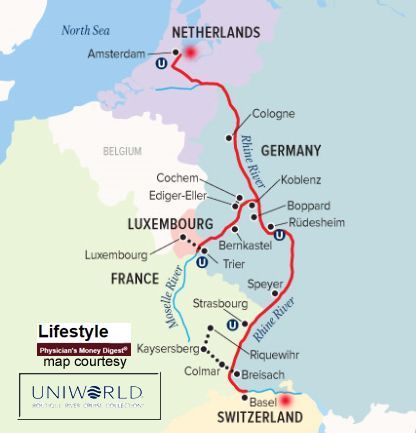
Perhaps the biggest contrast between ocean liners and river boats is seen on the sundeck. On our river boat, the 128 passengers vaguely notice and know each other. They really wouldn’t drag a chair into the best position for sightseeing, dump their towel on the seat to show possession then disappear for a two-hour breakfast and history lecture — then return with their paperback and iPhone camera to claim this possession. Sure the big ocean liners ask passengers not to “save chairs” on the sundeck but they don’t enforce the rules and on a gigantic ocean ship with anonymous passengers who don’t play the game right do you really wish to create a scene – on a vacation – over something as trivial as losing a great seat.
It’s a times like that that river boat passengers realize that on a boat only 361 feet long you will keep passing and nodding to the same people for the entire cruise and even passengers who crave privacy will discover old world courtesies work better as the oil that lubricates the day. Once in Hong Kong we remarked to a local how delightfully well-mannered and efficient the city was (a torrential rain had just started and everyone had rushed to line up for taxis and now stood in line waiting their turn!). The local replied: “We are a small island with a huge population. If we did not maintain good manners it would be anarchy!”
So life on a river boat.
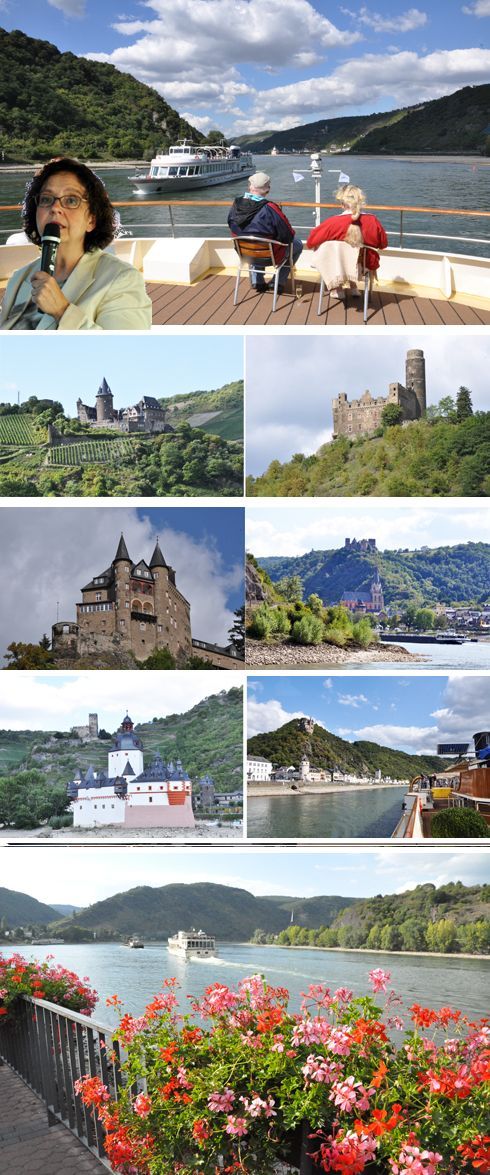
The Rhine castles pass, each so different yet hard to identify even when Claudia, the tour manager, is on deck with us making sure we don’t miss one of the main attractions of a Rhine cruise.
We finally sail into one of our favorite European cities, Amsterdam. Although its citizens would appear ready to knock you down in an instant on their millions of bicycles, they all seem fairly fluent in English. We once said to a publicist for the city: “We are embarrassed we speak no Dutch yet even the janitor in the toilets speaks English. Why is that?”
She replied, “Dutch is such an ugly language, we can’t expect visitors to learn our language.”
Amsterdam is a favorite city for more reasons than some local familiarity with the English language. It has as good a public transportation system as any in Europe. For instance, if you were staying as an individual here (and not being spoiled by Uniworld on shore excursions) and were at the central station Ibis Hotel, you would be right beside the railway station and all the forms of transportation Amsterdam offers for bus and canal boat activities.
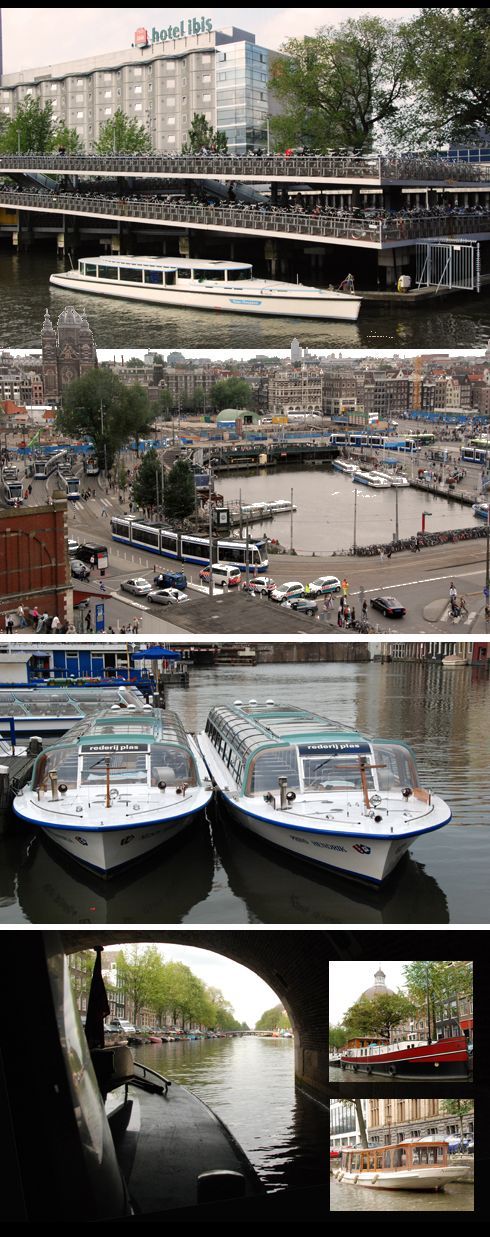
The signature tourist thing to do in Amsterdam, the “Venice of the North,” is to take a short canal cruise, although you won’t find romantic gondolas in this city. What you will find is evidence of medieval wealth. The Netherlands was the most prosperous country in Europe during the Dutch Golden Age, the 17th century. A lecturer once told us that to understand the Dutch you have to understand how worthless this land was below sea level when the first European tribes discovered it. He said that after the Roman Empire shrank its frontiers the local tribes moved in and mastered the skill of harvesting land lower than sea level. Because locals got to the land before either the church or the aristocracy realized it had value and they could exploit it (as happened everywhere else in the Feudal Age of Europe), the merchant class came to dominate their country’s wealth. Such affluence explains the obvious prosperity of some homes seen on a canal cruise and how Dutch families could afford then to assign and buy the enormous and exquisite art on the walls of the new Rijksmuseum.
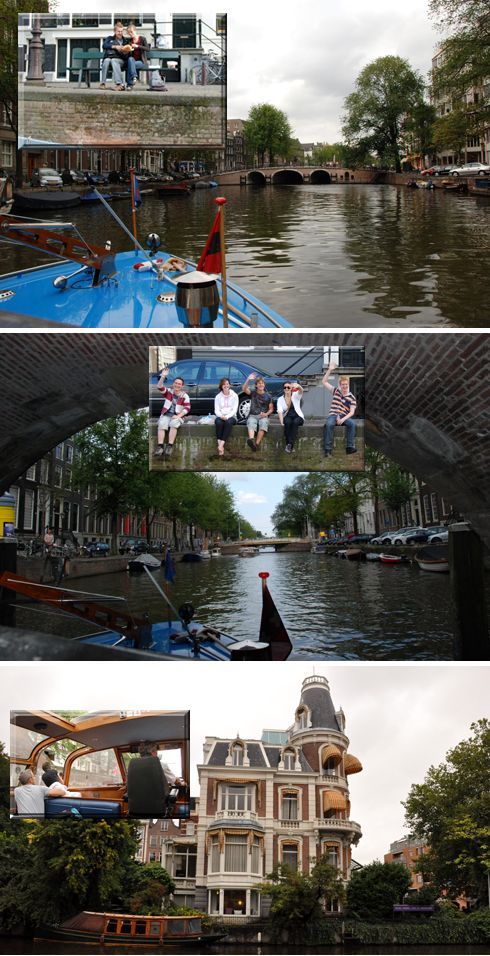
The Ibis would be the perfect hotel to bookend a river boat cruise that began or ended in Amsterdam. That’s how we discovered this hotel on our Uniworld cruises. You are also right where the trains depart for the airport and within easy walking distance of many of Amsterdam’s small museums (click here for our article on those small but grand museums) and you are less than two miles from the famous two museums in the Netherlands, the Van Gogh and the Rijksmuseum.
Both major museums in Amsterdam have been completely re-worked. We had visited the Van Gogh a few times but not the new Rijksmuseum. This newly improved Rijksmuseum is uses Rembrandt’s The Night Watch as a focal point and surely shows this massive painting of 11.91 feet by 14.34 feet to advantage. But by making the painting so foremost in the museum it has created a road block in the traffic within. Once upon a time, you could get close to this memorable painting that hits you with an impact that the Louvre’s tiny Mona Lisa does not (just an opinion); now you have to wait till all the full-sized iPhone cameras are finally lowered so you can wiggle your view past all the heads still in front of you.

The Night Watch
Image top left Van Gogh. All authors’ images courtesy Van Gogh Museum and Rijksmuseum. Top right, and second left, how close you could once get to . Second right statues at entrance to Rijksmuseum. Middle: today’s busy scene. Former canon position. Today’s canon that seems to be making you keep your distance.

It is worthwhile to try and come at a quiet time. You need to give Rembrandt adequate time. But experts say his style works better if you give it some distance.

Silver ware, gold vases and tapestries. Give yourself time.
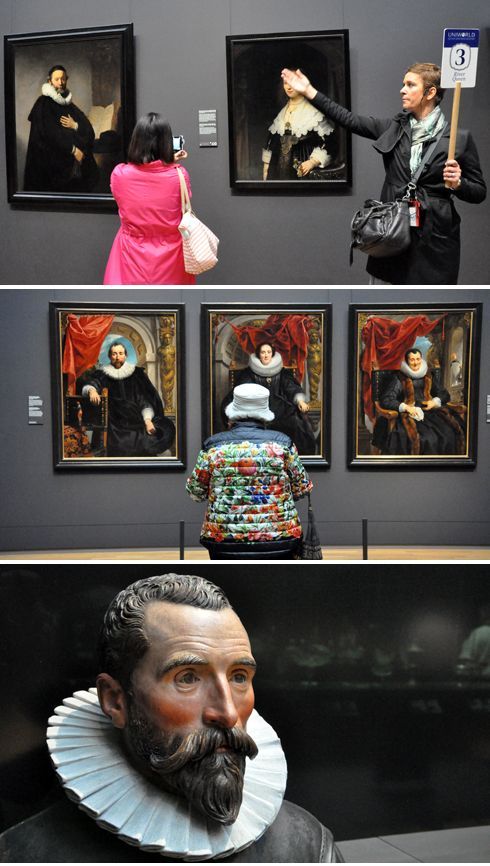
There’s more than a lot to see in the new Rijksmuseum. Ask your questions of the Uniworld guide before you get to the museum. Clarify what you might particularly want to see; she will send you off in the right direction after she brings you review to what Rembrandt hath wrought. Still as you wander and wonder…the thought does intrude: what if, while you study those people who are gorgeous examples of Dutch art, what if one of those 17th century persons is studying you?
And tomorrow: Home.
Photography by the authors
The Andersons, who live in San Diego, are the resident travel & cruise columnists for Physician's Money Digest. Nancy is a former nursing educator, Eric a retired MD. The one-time president of the New Hampshire Academy of Family Physicians, Eric is the only physician in the Society of American Travel Writers. He has also written five books, the last called The Man Who Cried Orange: Stories from a Doctor's Life.




